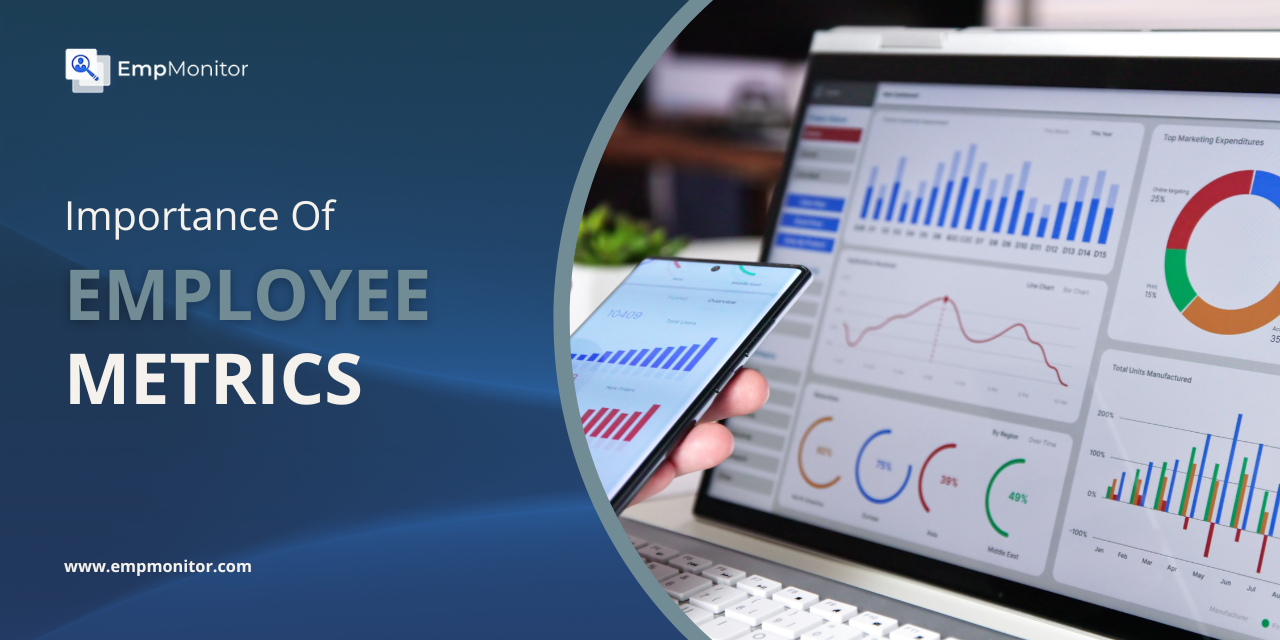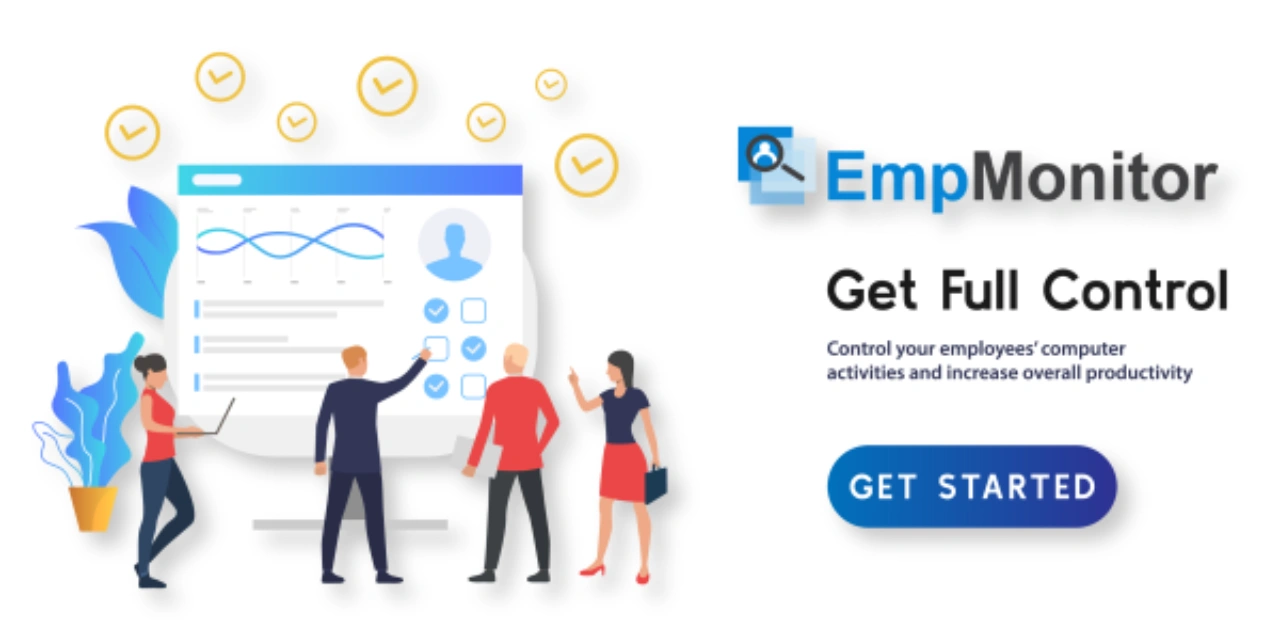Every organization wants its people to thrive, but how do you actually measure that? That’s where employee metrics come in. Whether you’re managing a small team or leading an entire department, having the right data about your employees’ performance, engagement, and productivity is like having a map in a maze. It helps you see what’s working, where people are struggling, and how to guide your team toward better outcomes.
By using well-chosen metrics, leaders can make smarter decisions, support growth, and build a workplace where everyone has the tools to succeed. This blog explores which employee metrics matter most, how to use them without micromanaging, and what tools can help you do it all smoothly.
In a hurry? Listen to the blog instead!
What Exactly Are Employee Metrics?
Think of employee metrics as your team’s performance dashboard. They’re data points that help you understand how individuals and teams are doing at work, whether that’s hitting goals, showing up on time, learning new skills, or staying engaged.
These metrics aren’t just about numbers on a screen. They tell a story. When used right, they highlight strengths, uncover gaps, and guide meaningful decisions that actually move the needle.
Here’s the simplest way to break it down:
- Performance metrics tell you how well someone is doing their job.
- Productivity metrics track how efficiently tasks are being completed.
- Engagement metrics reflect how involved and motivated employees feel.
- Development metrics reveal how people are growing and evolving within the company.
Rather than relying on guesswork or vague impressions, these measurements offer clear, objective insights that help leaders support their teams better and help employees grow with purpose.
To get the most out of your employee metrics, you need the right tools. EmpMonitor helps you track, analyze, and act on real-time data with ease.
Key Employee Metrics To Track
Now that we’ve explored the main types of employee metrics, let’s look at specific examples that managers can track to support performance and productivity.
When it comes to employee metrics, the challenge isn’t just about choosing any data point, it’s about selecting the right ones. While there are countless metrics you could track, focusing on the most impactful ones ensures you’re not drowning in data but using it to drive meaningful change.
Let’s have a look at the key metrics every manager should consider:
1. Task Completion Rate
This is a metric that tells you how many tasks an employee or team completes within a given period. It’s a great way to track efficiency and time management.
Why It Matters: A high task completion rate can indicate that your team is efficient and focused. On the flip side, low completion rates could point to bottlenecks, a lack of clarity, or unproductive habits.
How to Use It: Make sure not just to measure the number of tasks completed, but also the complexity and quality of those tasks.
2. Quality of Work
This metric assesses how well the tasks are performed, often through peer reviews, error rates, or customer feedback.
Why It Matters: It’s not just about finishing work but about doing it well. Tracking quality ensures that employees are maintaining standards and that the end results are aligned with company goals.
How to Use It: Consider setting up a regular review system (e.g., weekly or monthly) where managers or peers rate the work based on criteria like accuracy, creativity, and attention to detail.
3. Employee Engagement
Employee engagement metrics measure how invested employees are in their work and the company. This is often gauged through surveys, feedback forms, or eNPS (Employee Net Promoter Score).
Why It Matters: Engaged employees are typically more productive, creative, and loyal to the company. Engagement metrics can help uncover how employees feel about their roles and the company culture.
How to Use It: Regular surveys and one-on-ones can be used to gather honest feedback. A higher engagement score generally means you’re doing something right, while low scores signal the need for improvements in work culture or leadership.
4. Absenteeism Rate
How often do employees take unscheduled leave? The absenteeism rate measures this by tracking the percentage of workdays missed without prior notice.
Why It Matters: Frequent absenteeism can signal dissatisfaction, burnout, or even underlying health concerns. It’s an important metric to gauge employee well-being and satisfaction.
How to Use It: Analyze trends over time. For instance, if absenteeism spikes during a certain period, it could indicate issues with workload, team morale, or external factors (e.g., the flu season).
5. Training and Development Progress
This metric tracks the number of employees who participate in training programs and the progress they make in skill development.
Why It Matters: It ensures that your team is growing and evolving. Companies that invest in training see higher retention rates and better performance.
How to Use It: Track the completion of key training programs and measure how the acquired skills are applied in their daily tasks. Encouraging employees to continue learning can lead to greater innovation and job satisfaction.
6. Overtime Hours
Tracking overtime isn’t just about payroll; it’s a window into your team’s workload and operational efficiency. Excessive overtime can indicate understaffing, inefficient workflows, or unrealistic expectations.
Why It Matters: Regular overtime may lead to burnout, decreased morale, and increased costs. Monitoring it helps ensure your team is working sustainably and resources are balanced across projects.
How to Use It: Track overtime by department or individual and compare it with productivity levels and project deadlines. Use this insight to redistribute tasks, adjust hiring needs, or reevaluate time estimates.
7. Customer Satisfaction Impact
While not a direct employee metric, how your team impacts customer experience is a powerful reflection of their performance. Metrics like CSAT (Customer Satisfaction), CES (Customer Effort Score), and NPS (Net Promoter Score) offer insights into how effectively your employees serve and support customers.
Why It Matters: Satisfied customers often reflect well-trained, engaged, and responsive employees. A drop in satisfaction could be a sign of internal issues that need to be addressed, such as training gaps or morale concerns.
How to Use It: Align employee roles (especially in customer-facing teams) with specific CSAT or NPS goals. Review survey feedback regularly and use it to guide recognition, coaching, or team improvements.
Why Employee Metrics Matter?
Implementing the right employee metrics offers several benefits:
Enhanced Productivity: By tracking performance, organizations can identify bottlenecks, streamline workflows, and reduce time waste.
Informed Decision-Making: Data-driven insights empower leaders to make smarter calls about staffing, training, and project priorities.
Employee Development: Metrics spotlight areas where employees excel or may need support, enabling targeted growth initiatives.
Accountability: Clear, consistent metrics help set expectations and keep team members aligned with company goals.
How To Choose The Right Employee Metrics For Your Team?
With so many possible employee metrics out there, it’s easy to fall into the “track everything” trap, but more data isn’t always better. In fact, tracking too many metrics can lead to confusion, wasted time, and even employee frustration. That’s why it’s important to be intentional.
Here’s a simple framework to help you decide what to track, based on your team’s goals, roles, and work culture.
1. Start With Clear Objectives
Ask yourself: What are we trying to achieve as a team or department?
Your metrics should always connect back to a business goal. For example:
- Want to improve customer service? Track response time and customer satisfaction scores.
- Trying to increase efficiency? Look at task completion rates or time spent on high-priority tasks.
- Aiming to boost innovation? Consider tracking training hours or cross-team collaboration.
When metrics are tied to real objectives, they’re much easier to explain, monitor, and act on.
2. Match Metrics to Roles
Not all employees should be measured the same way. Each role contributes differently, so metrics must match the job.
For example, a sales rep might be evaluated on calls made, deals closed, and revenue generated. A developer is better assessed through code quality, task completion, and bug fixes. For an HR manager, time-to-hire, onboarding success, and employee satisfaction are more relevant. Tailoring employee metrics to each role ensures evaluations are fair, relevant, and more meaningful, helping both managers and employees focus on what truly drives performance in their unique responsibilities.
3. Make Sure the Data is Accessible
Before you commit to a metric, ask yourself: Can I track this accurately without creating more work?
Choose metrics that can be measured:
- Automatically (with software)
- Regularly (daily, weekly, or monthly)
- Objectively (with clear definitions)
You don’t want managers spending hours pulling data from multiple sources or chasing down reports. That’s where smart tools like EmpMonitor can make a real difference. It helps track key aspects of employee performance, such as task completion rates, productive vs. idle time, and time spent on specific apps and websites.
Furthermore, employees can access their own performance data, encouraging transparency and self-awareness. With all insights available in one place, tracking becomes easier, more accurate, and far less time-consuming for everyone involved.
4. Keep It Balanced
It’s tempting to focus on numbers like speed and output, but don’t ignore the human side of work. Team productivity metrics and KPI productivity are important, but so are engagement, collaboration, and learning.
A good set of metrics includes a mix of:
- Quantitative data (like tasks completed or hours worked)
- Qualitative data (like feedback scores or peer reviews)
This helps you understand the full picture of someone’s performance, not just what they did, but how they did it.
By taking the time to pick the right employee metrics, you create a culture that values both performance and personal growth. You also avoid wasting time on numbers that don’t really matter.
Turning Employee Metrics Into Action
Collecting data is easy, but putting it to meaningful use is what actually counts. Many organizations gather employee metrics but stop short of acting on them. The real value lies in turning those insights into steps that improve performance, boost productivity, and strengthen team morale.
So, how do you turn metrics into momentum? Here’s how to make your data work for you (and your team).
1. Spot the Patterns Early
Once you’ve tracked data for a few weeks or months, take a step back and look for trends.
- Is a specific team consistently underperforming?
- Are engagement scores dropping around the same time every quarter?
- Are some employees showing sharp declines or spikes in productivity?
Look beyond the surface; every trend tells a deeper story. Maybe a process is broken. Maybe someone’s feeling burned out. Maybe a team is ready to level up. The data points you’ve collected are like clues, and patterns help you solve the puzzle.
Example: If your task completion rate has dropped but hours worked haven’t changed, it might be a workflow issue, not laziness.
2. Use Metrics in 1-on-1 Conversations
Employee metrics shouldn’t be something managers keep to themselves. They should be a starting point for open, supportive conversations.
Here’s how to approach it:
- Share the data in advance.
- Ask employees how they interpret it.
- Discuss roadblocks, wins, and goals.
- Collaborate on a growth-focused action plan.
This turns data into dialogue. It also shows employees that metrics aren’t about micromanagement, they’re about helping them grow.
3. Set Realistic, Measurable Goals
After identifying areas for improvement, set clear, measurable goals aligned with your metrics. These become your KPI for productivity, Key Performance Indicators that guide progress.
For example:
- Reduce average task completion time by 20% over the next quarter.
- Increase engagement survey scores by 10 points.
- Complete 3 hours of upskilling per employee per month.
Make goals visible, track them regularly, and celebrate progress along the way.
4. Adjust Processes Based on Data
If metrics keep pointing to the same issues, the solution might not be training or performance coaching, it could be a system or process problem.
It is possible that:
- Deadlines are unrealistic.
- Roles and responsibilities are unclear.
- Tools are outdated or not user-friendly.
Metrics give you proof, so you can make smart changes that boost team effectiveness, not just push harder.
5. Recognize and Reward Progress
People want to feel seen. Use employee metrics to recognize wins, both big and small.
- Celebrate the top 3 most improved team members in a month.
- Shout out employees with consistent, high-quality work.
- Reward teams who hit key benchmarks like a productivity KPI or training milestone
Recognition builds momentum. It turns metrics into motivation.
By taking action on your employee metrics, you turn passive data into powerful results. Whether it’s improving workflows, supporting struggling team members, or celebrating success, acting on metrics is where real performance growth happens.
How Can EmpMonitor Be Effective In Tracking Metrics
To truly maximize workforce performance, measuring employee metrics effectively is essential, and that’s where EmpMonitor excels. It’s not just a time-tracking solution; it’s a comprehensive, all-in-one workforce management solution designed to help you monitor performance and drive productivity without micromanaging your team.
With features like real-time activity tracking and project monitoring, EmpMonitor allows you to see how long tasks take, track progress, and spot workflow bottlenecks without disrupting your team’s flow. Its automated attendance reports make it easy to identify who’s working overtime or logging late hours, ensuring transparency and fairness in performance evaluation.
You can also create custom rules and alerts, assign and manage shifts, and define specific apps or websites as productive or unproductive based on your unique business needs.
Want to eliminate distractions? EmpMonitor enables you to block access to non-work-related apps and websites, keeping everyone focused.
From detailed productivity reports to customizable dashboards and strict adherence to privacy standards, EmpMonitor provides everything you need to make confident, data-driven decisions. It’s the bridge between insight and action, empowering managers to lead with clarity, not control.
Read More
Top 5 Tools To Measure Employee Productivity Metrics
How To Measure Employee Engagement Metrics
The Ultimate Guide To Productivity Measurement: 5 Easy Strategies
Common Mistakes To Avoid When Using Employee Metrics
When employees hear the word “metrics,” it can trigger feelings of surveillance, pressure, or judgment. It’s easy to see why; data can sometimes feel like a microscope, under which employees feel scrutinized.
However, when used and communicated thoughtfully, metrics can actually foster trust, clarity, and confidence within the team. The way metrics are presented and interpreted can either make or break morale.
Here are some common mistakes to avoid when working with employee metrics:
Overemphasis on Quantity: Focusing solely on output can compromise quality and overlook the nuances of an employee’s contributions.
Neglecting Context: Metrics should be interpreted within the broader organizational and individual context.
One-Size-Fits-All Approach: Applying the same metrics to all roles ignores role-specific goals and expectations. For example, measuring productivity metrics for a creative role might require a different approach than for a sales role.
Infrequent Review: Regularly revisit and adjust metrics to remain aligned with evolving goals.
Lack of Transparency: Keeping metrics hidden from employees reduces trust and limits their ability to improve.
Ignoring Employee Feedback: Failing to include employee perspectives can result in incomplete or biased interpretations.
Final Thoughts
Effectively tracking and utilizing employee metrics is more than a performance strategy, it’s a mindset that puts growth, clarity, and collaboration at the center of your workplace. When done right, metrics don’t just help you measure productivity; they help you improve it.
By focusing on relevant, role-specific indicators, transforming raw data into meaningful action, and communicating results with empathy and transparency, organizations can build a culture that values both results and people. Whether you’re trying to meet a productivity benchmark, enhance engagement, or simply understand how your team is doing, the right metrics will guide the way.
And remember, the goal isn’t to micromanage; it’s to empower. Tools like EmpMonitor can support this effort by simplifying tracking, offering real-time insights, and giving managers and employees alike the information they need to grow.
When metrics are handled with intention, they stop being numbers on a dashboard and start becoming the fuel behind a more productive, motivated, and aligned workforce.
Ready to make your metrics meaningful? Let’s start measuring what truly matters.
















